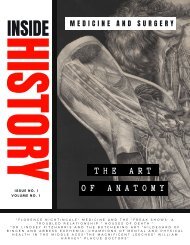Golfhacker11
Create successful ePaper yourself
Turn your PDF publications into a flip-book with our unique Google optimized e-Paper software.
Golfhacker originally published this article in its sample edition. As Golfhacker<br />
Magazine has grown in popularity we thought it would be best to republish it.<br />
Mark Curtis is a Sport Physiotherapist with over 12 years experience who kindly<br />
wrote this piece to help fellow golfers prevent getting lower back pain. It is<br />
essential reading.<br />
______________________________________________________________________<br />
Whether a fellow hacker or a seasoned professional, you have more than likely<br />
picked up one or two injuries on the golf course in your time. Lower back pain is<br />
the number one injury sustained by golfers, accounting for up to 34.5% of all<br />
injuries.<br />
Several factors have been linked to causing lower back pain whilst playing golf,<br />
including altered posture and swing faults, inadequate warm up, and poor body<br />
conditioning (areas of weakness or stiffness). But how can you identify these<br />
problems and reduce the risk of injury to your lower back?<br />
Making sure your posture is correct when<br />
addressing the ball is extremely important. The two<br />
most common posture ‘faults’ that golfers adopt are<br />
an excessive C- Posture and S Posture.<br />
(C-Posture above, S-Posture right)<br />
C-Posture is used to describe a posture that occurs<br />
when your slump forward at the address and you<br />
have a definitive roundness to your mid back. This<br />
limits the amount of rotation available throughout<br />
the trunk. The golfer, therefore, has to compensate<br />
by excessive movement at the shoulders and legs to<br />
generate force.<br />
S-Posture is a postural characteristic that can be<br />
caused by the player creating too much arch in the<br />
lower back by sticking their tail bone out and lifting<br />
their chest up. This excessive curvature in the lower<br />
back is caused by tight lower back and hip flex or<br />
muscles and weak abdominal muscles.

















